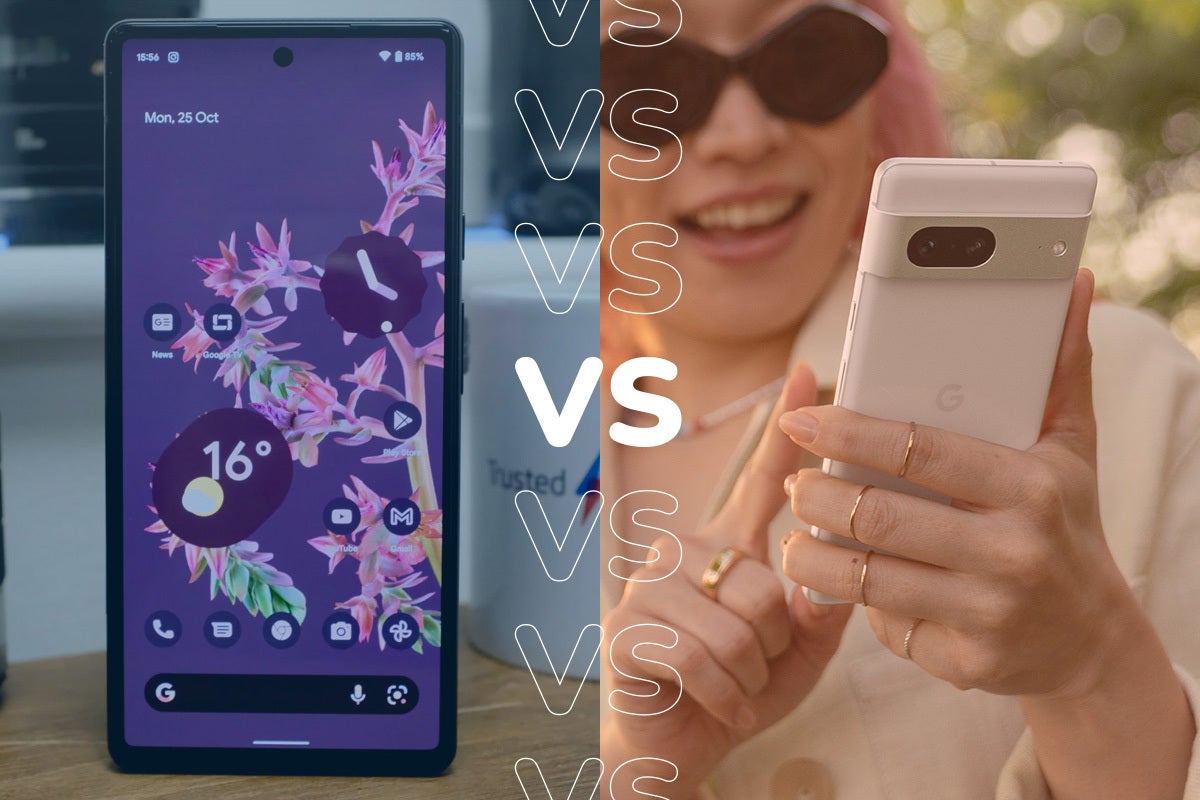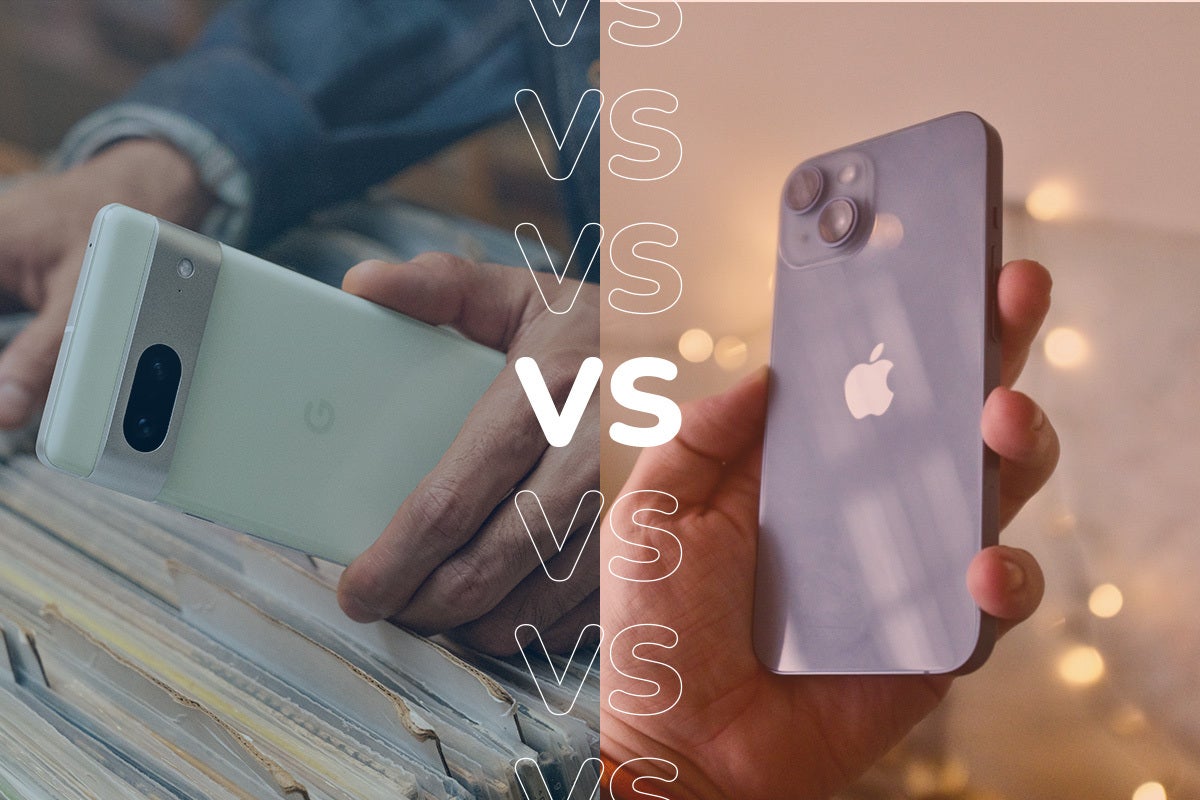iPhone 14 Pro vs Pixel 7 Pro: Apple or Android?
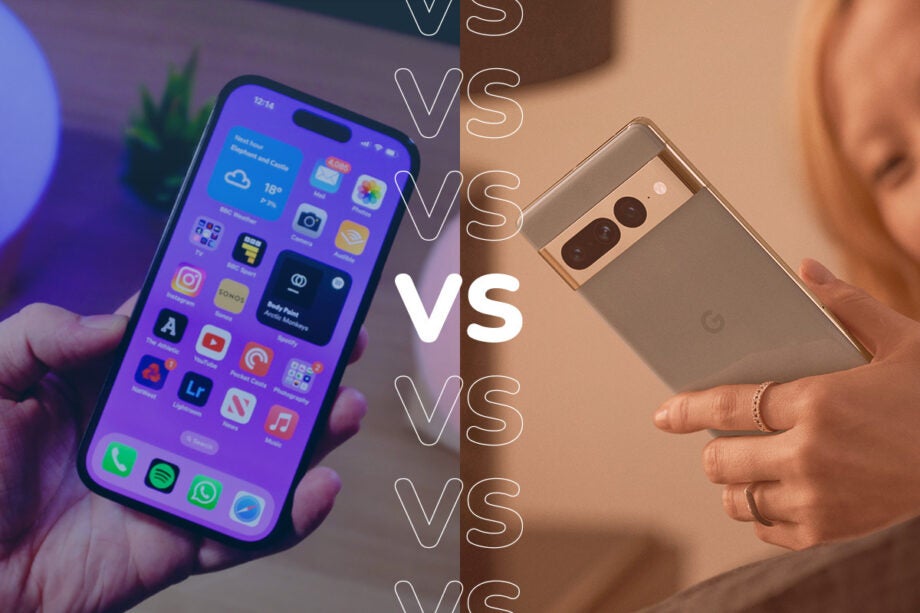
Two of the biggest names in tech have dropped the latest additions to their Pro series of devices, but which device really comes out on top?
Google and Apple are some of the biggest names in business, and both companies offer a dedicated range of mobile devices. The latest batch includes the iPhone 14 Pro and the Pixel 7 Pro, although Apple does offer an even more expensive and feature-packed phone with the iPhone 14 Pro Max.
But when you look closer at these Pro devices, which one actually offers the most features, has the quickest performance and packs the best screen? Since we’ve been able to thoroughly review and test both of these handsets, we’re going to walk you through all the differences including pricing, design, battery and performance, so you can decide if Apple or Android reigns supreme.
Price
The iPhone 14 Pro is more expensive than the Pixel 7 Pro, however, it does come with more storage options, going as high as 1TB. You can see a breakdown of the pricing of the iPhone 14 Pro below.
- 128GB: £1,099/$999/€1,329
- 245GB: £1,209/$1,099/€1,459
- 512GB: £1,429/$1,299/€1,719
- 1TB: £1,649/$1,499/€1,979
The Google Pixel 7 Pro can be found in 128GB and 256GB variations, making it a lot more limited than its Apple rival. You can check out a price breakdown of the handset below.
- 128GB: £849/$899/€999
- 256GB: £949/$999/€999
Design and Screen
The iPhone 14 Pro has undergone a big redesign, ditching the infamous notch from previous handsets and utilising the new Dynamic Island instead. This feature comprises elements of the True Depth camera system for easy and reliable Face ID, and adds an extra layer of interaction to the phone by keeping you informed on any apps that are working in the background, like the Timer app or Spotify.
Elsewhere, the design is very reminiscent of the iPhone 13 Pro, with the same flat back, shiny stainless steel sides and frosted glass back. It can be purchased in Deep Purple, Gold, Silver and Space Black and has an IP68 water rating to help keep the phone protected from liquids and dust.
The iPhone 14 Pro packs a 6.1-inch Super Retina XDR OLED display with a 2556×1179 resolution at 460ppi. We really liked the display, with our reviewer going as far as to say that this is the most usable phone in direct sunlight that we’ve ever tried, which makes sense considering the claimed 2,000 nits of peak brightness.
It also comes with ProMotion technology, which allows the panel to jump between 120Hz and 1Hz depending on usage. This helps keep the screen feeling fluid and smooth during intensive tasks and helps to conserve battery when you’re simply reading a block of static text.
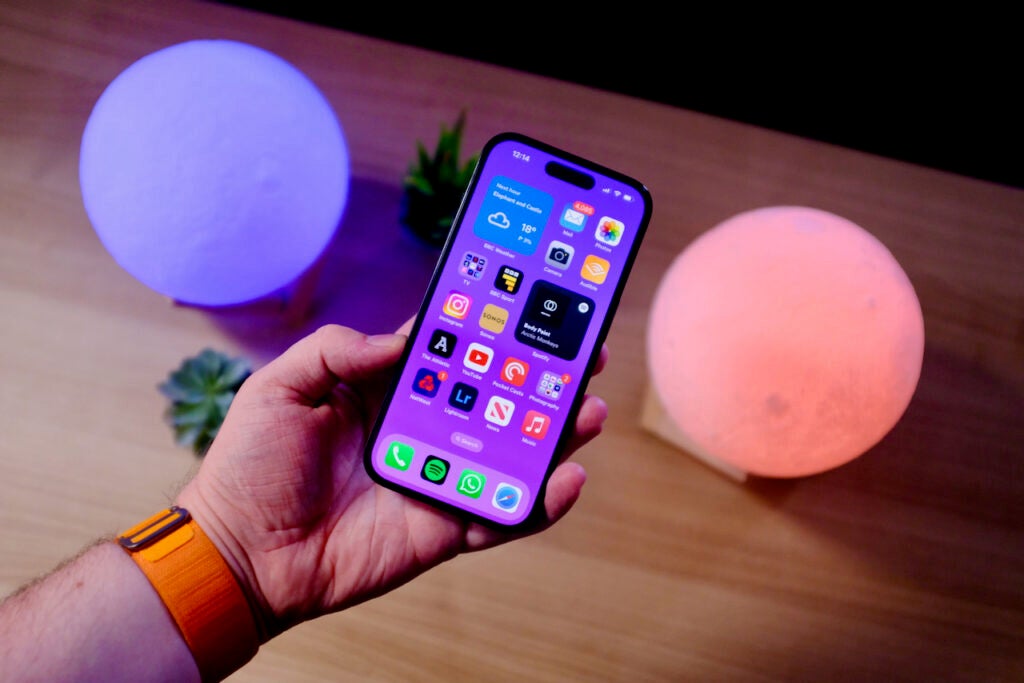
Turning to the Pixel 7 Pro, Google made some bold changes in the design, releasing a curvier phone that packs a noticeable camera visor, or Camera Bar, on the back. This contrasts with the glossy back of the phone and we thought that the Obsidian colourway we reviewed looked much nicer than the greyish colour offered by the Pixel 6 Series.
Alongside the Obsidian colourway, the Pixel 7 Pro can also be found in Hazel and Snow, and it also comes with the same IP68 dust and water resistance rating as the iPhone 14 Pro. It uses an all-in-display fingerprint sensor that we thought worked well as well as the responsive face unlock, even if it doesn’t have any of the software-based skills that the iPhone’s Face ID uses.
This phone packs a 6.7-inch panel with a 1440×3120 resolution which worked great for us in direct sunlight. However, we did not think that HDR content played on the Pixel 7 Pro was on par with the iPhone 14 Pro, as it didn’t have the same level of brightness and immersion as its Apple counterpart.
Despite this, we still thought that the Pixel 7 Pro was a great device to use and that it worked well during video content, with Google’s Smooth Display allowing the screen to adaptively alter its refresh rate, in the same vein as ProMotion. It can go as high as 120Hz for activities like gaming and as low as 10Hz for simpler tasks, with the iPhone edging out this slightly by dropping to a mere 1Hz when needed.
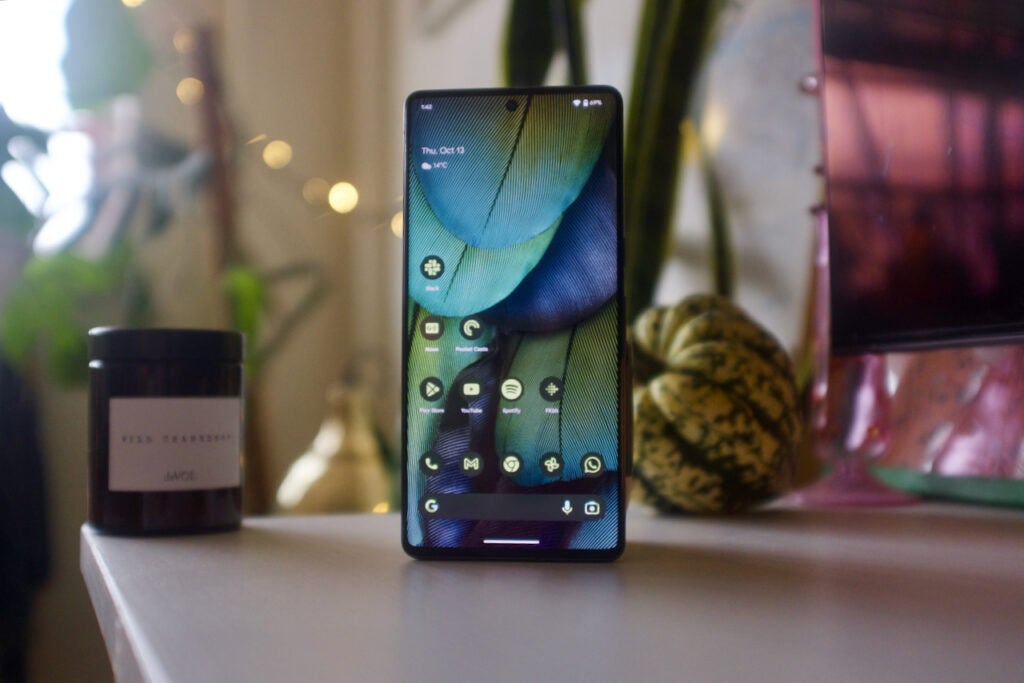
Camera
The iPhone 14 Pro comes with a 48-megapixel main sensor (f/1.78), a 12MP ultra-wide sensor (f/2.2), a 12MP 2x telephoto sensor (f/1.8) and a 12MP 3x telephoto sensor (f/2.8). It boasts Smart HDR 4, Deep Fusion technology and the new Photonic Engine.
We thought that the iPhone 14 Pro is one of the best camera phones on the market right now, and even though it does have some flaws, it comes with such a wide array of sensors and lenses that it should be able to please almost anyone. Using the 48MP sensor in ProRaw mode captured amazingly detailed shots, although they will be most useful for people looking to edit their images in apps like Photoshop or Lightroom.
The iPhone 14 Pro took excellent pictures regardless of the environment, kicking into Night Mode much quicker than its predecessor and capturing a lot of detail. We thought that the colours in photos were rich and popped with the right amount of saturation, with many objects having a similar look in photos as they do in real life.
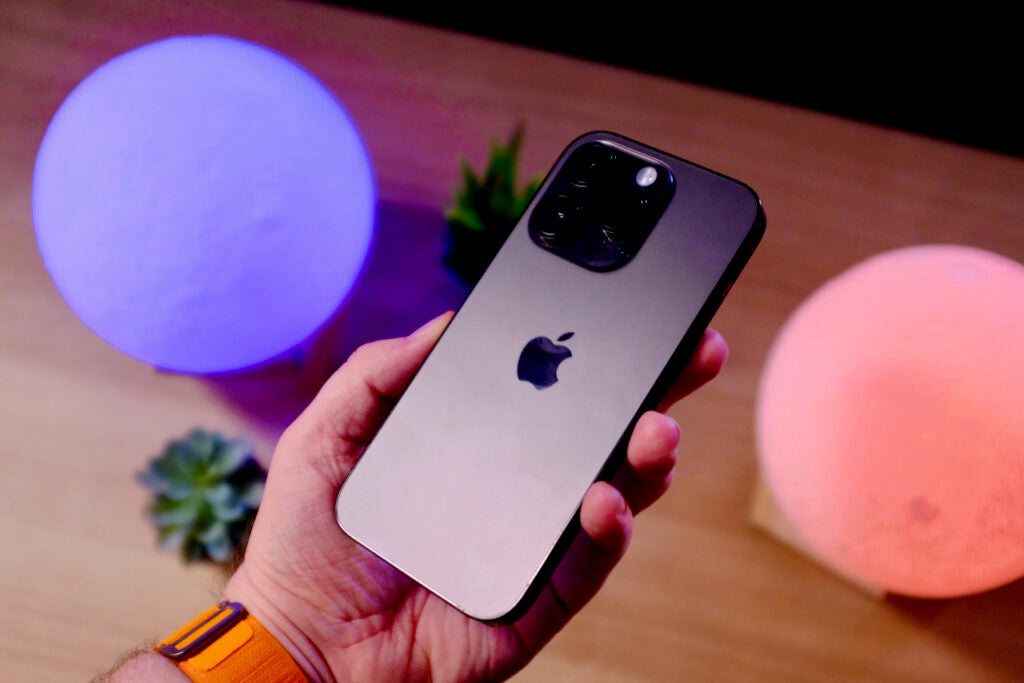
The Pixel 7 Pro features a 50MP wide camera (f/1.5), a 12MP ultra-wide sensor (f/2.2) and a 48MP telephoto sensor (f/3.5). We struggled to decide if this phone took better pictures than the iPhone 14 Pro since they all come out as exceptional, but we found that Google’s handset was able to produce shots that were full of detail, dynamic range and rich, contrast-heavy colour.
The Pixel 6 Series introduced Real Tone, which helps to better represent a variety of skin tones within pictures, and we think that the Pixel 7 Pro is the best phone camera on the market in terms of accurate skin representation.
We noted that we preferred the night shots taken by the iPhone 14 Pro, even though the performance of the Pixel 7 Pro is very good. Photos were packed with detail and Google seems to be more reliable, especially if you don’t have the time to set up your shots and just want to snap some pictures quickly.
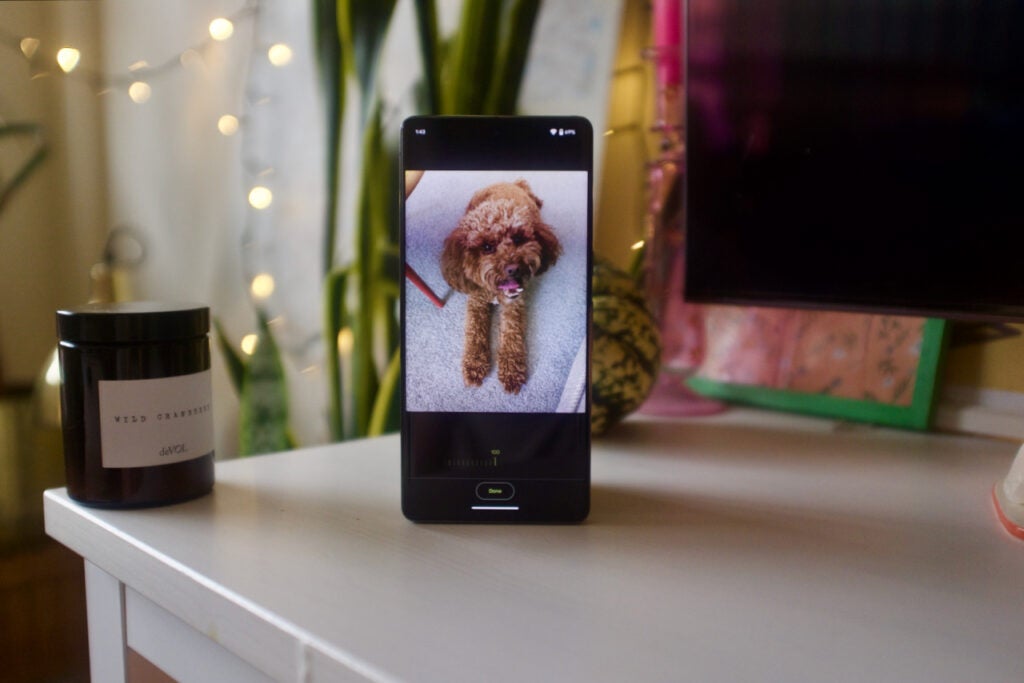
Performance
The iPhone 14 Pro comes with the latest A16 Bionic chip, which includes a 6-core CPU, 5-core GPU and 16-core Neural Engine. We felt that the phone could be the fastest of its kind on the market, making easy work of Apple Arcade apps and handling ProRes video exports and edits. We also think that it almost packs too much power, meaning that it has plenty of headroom for the future.
It has support for 5G as well as Wi-Fi 6, although it’s important to note that if you buy this model in America then it won’t come with a physical SIM tray as Apple is encouraging its users to transfer over to e-SIM technology.
Apple also included Car Crash Detection on this device, which will contact local emergency services, as well as any emergency contacts that have been set up, if you find yourself in an accident. While we can’t say that we’ve tested out this feature, it seems like a good addition in terms of safety.
The iPhone 14 Pro also runs on iOS 16, which now has a lot more options when it comes to customisation, with the ability to add widgets to your lock screen and create multiple backgrounds. Moreover, the 6GB RAM and up to 1TB storage options will be more than enough for most people, although the highest storage options result in the device being a lot more expensive.
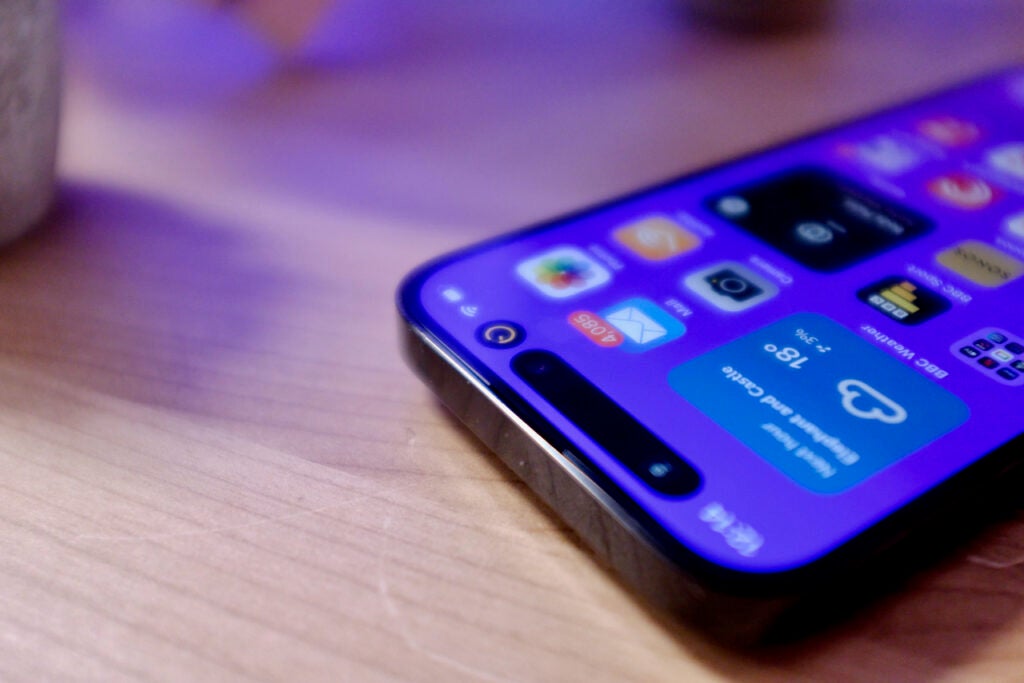
The Pixel 7 Pro on the other hand uses the Google Tensor G2 chip. While the G2 chip doesn’t have as much raw power as Apple, Google has put a lot more focus on developing the phone’s AI skills, both in on-device learning elements and the processing of photos from the camera.
One of the apps we singled out was the Recording app, which is one of the most accurate transcribing and voice recording tools that we have ever used. It was able to turn audio conversations into perfect text without needing an internet connection and made some day-to-day tasks a lot simpler.
Google’s handset runs on Android 12 and widgets are a big focus, but they do seem to fall short when compared to Apple’s new setup, as we noted that many of the daily widgets we used looked like they were built five years ago and not updated since.
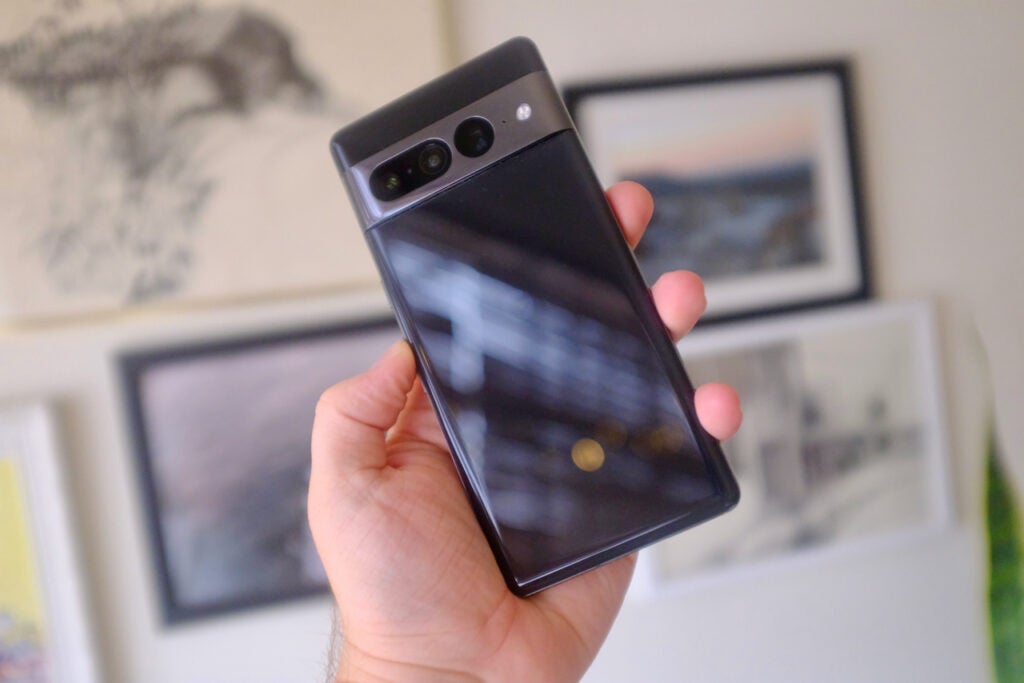
However, we did find that the Pixel 7 Pro was perfectly serviceable for playing games and was smooth and responsive to use, and unlike the latest iPhone, there is support for Wi-Fi 6E as well as 5G. The limited storage options at 128GB and 256GB with 12GB RAM, are a little more restricting than Apple, meaning that you will need to think long and hard if you want to invest in cloud services as a fix.
If you want an in-depth look at all the spec differences between these two Pro handsets, then check out the comparison block below.
iPhone 14 Pro and Pixel 7 Pro specs comparison
Battery Life
The iPhone 14 Pro boasts a similar endurance to the iPhone 13 Pro, with our reviewer claiming that the phone had between 10-15% battery left at the end of a typical day. Turning the always-on display off boosted that number up to 20%, however, we did notice that watching HDR content with full brightness takes a large toll on the battery, eating up to 15% an hour.
We did also note that after a few heavy use days, notably ones with lots of music streaming and gaming, we needed to charge the phone after getting back from the office. There is no charger included with this handset but there is a 20W plug that can be paired with a USB-C to Lightning cable, which got us up to full charge from 0% in 99 minutes.
The Pixel 7 Pro came out with similar results, leaving our reviewer with 10-15% battery at the end of the day. In the same vein as Apple, this handset will require nightly charges, unless you want to severely limit the skills of the device with the new Extreme Power Saver which we think will mostly come in handy for festivals or camping trips.
Charging up the device to 100% took us between 80-90 minutes, but there is also no charger included in the box, putting these two phones at a remarkably similar level in terms of battery life and charging.
Verdict
Overall, both of these handsets are seriously impressive and tick almost every box in terms of performance and reliability. The battery life of both devices pales in comparison to some other Android devices on the market, but both will get you through the day.
While the Pixel 7 Pro is a much more affordable device, it does not have the same performance power as the iPhone 14 Pro, as Apple has clearly been working very hard to beef up its latest mobile processors. If you’re interested in pure performance power, Apple is the way to go, even though both phones perform brilliantly during day-to-day use.
And while the cameras on both devices produce some beautiful shots, the iPhone seems to edge out the Pixel thanks to the amount of detail in every shot, and it seems better suited for those who are looking to edit and enhance their photos afterwards.
These phones also run on very different platforms, so you will want to consider if you prefer the sleek look of iOS or the freedom that comes with Android. But ultimately, while both Apple and Android have produced some of the best smartphones of the year, we will have to give the crown to the iPhone 14 Pro due to its incredible processing power, versatile camera and wonderfully rich screen.


